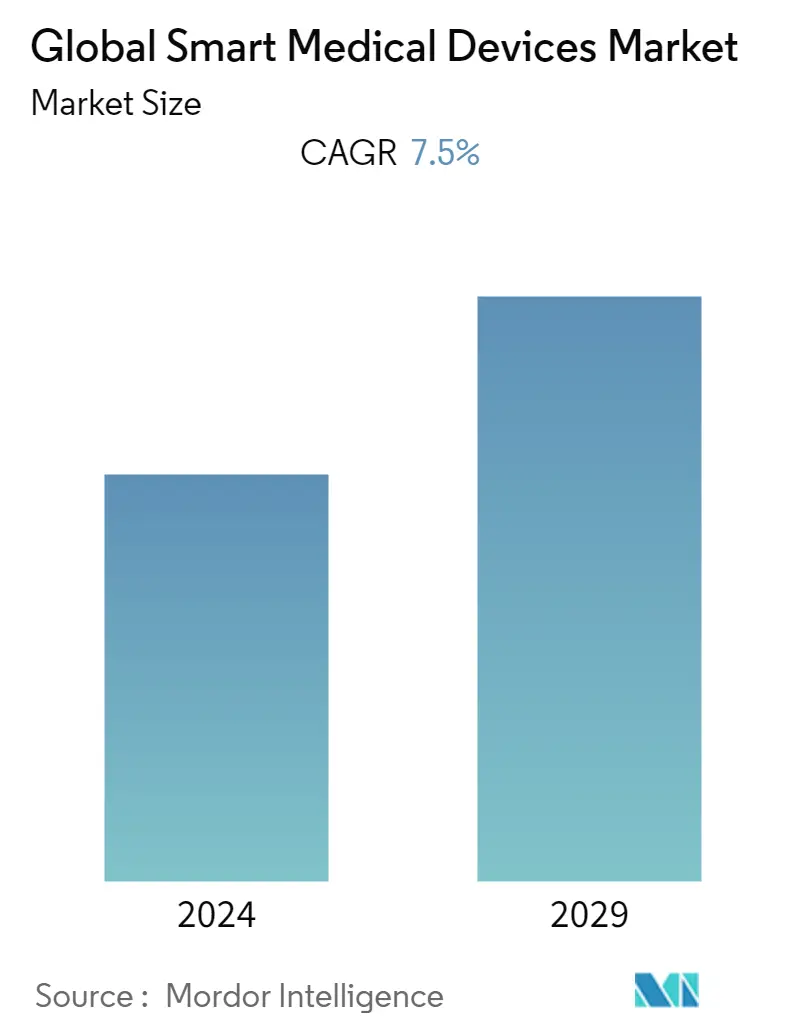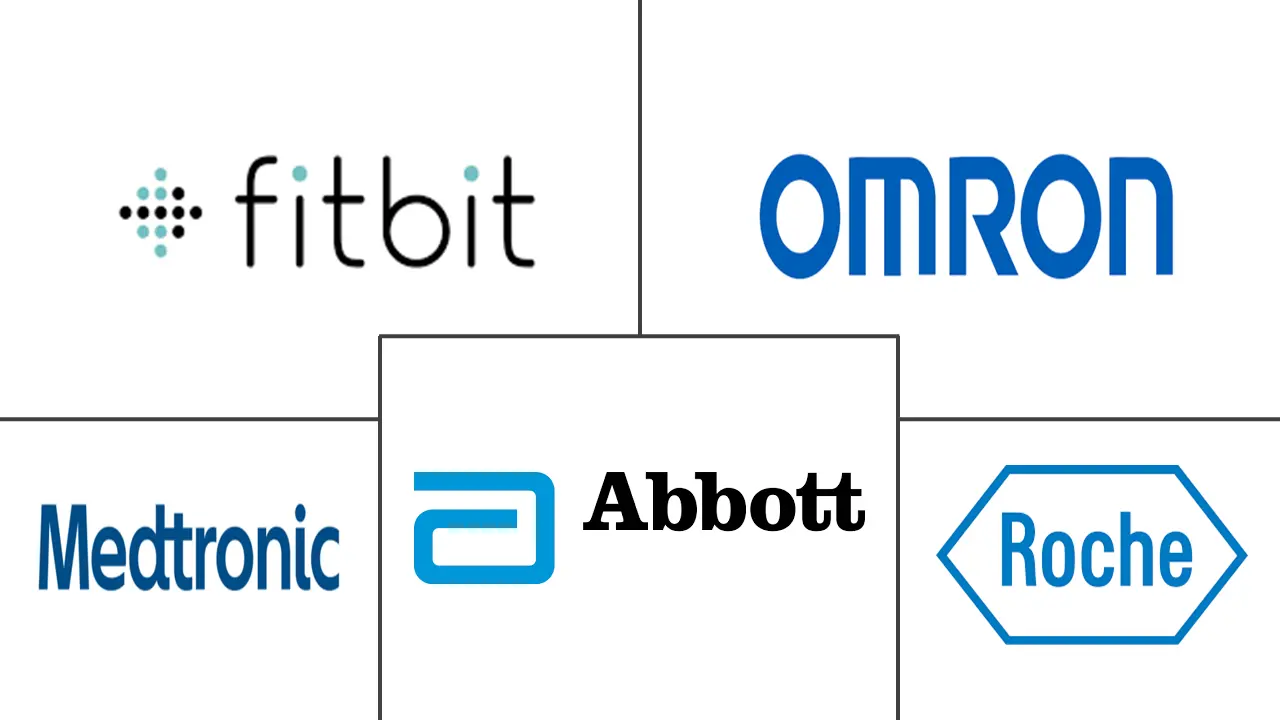Market Size of Global Smart Medical Devices Industry

| Study Period | 2019 - 2029 |
| Base Year For Estimation | 2023 |
| Forecast Data Period | 2024 - 2029 |
| CAGR | 7.50 % |
| Fastest Growing Market | Asia Pacific |
| Largest Market | North America |
Major Players
*Disclaimer: Major Players sorted in no particular order |
Need a report that reflects how COVID-19 has impacted this market and its growth?
Smart Medical Devices Market Analysis
The smart medical devices market is expected to register a CAGR of 7.5% during the forecast period (2022-2027).
During the COVID-19 pandemic, smart medical devices, including sensors and nano-bio sensors, have gained considerable importance due to contactless-based healthcare diagnosis. The wearable sensors can measure vital signals of the human body such as heart rate, blood pressure, skin coloration, body temperature, respiratory rate, sleep duration, and body motion. In April 2021, Researchers at Imperial College London and the University of Freiburg reported that they were developing wearable devices that could be used to develop a network of health data about a patient, allowing for early diagnosis of COVID-19 even when the patient is asymptomatic.
The smart medical devices market is driven by the rising demand for smartphone-compatible and wireless medical devices, technological advancements in devices, and rising awareness and focus on fitness.
The demand for wearable medical devices, such as sensors, ECG devices, and smartwatches with fitness trackers has increased because these devices are easy to use, and interpreting the results doesn't need great expertise. Thus, the user can keep track of their health condition by monitoring their vital signs without the need to visit clinics/hospitals frequently. This feature of wearable medical devices is expected to witness an increased acceptance among the geriatric population.
Additionally, the data updated by United Nations in its World Population Prospectus 2022 published in July 2022 mentioned that Europe and Northern America had the oldest population in 2022, with almost 19% population aged 65 or over. In addition, as per the United Nations Department of Economic and Social Affairs: Population Division data updated in July 2022 shows that as of January 2020, 15.6% of the total population in the Netherlands are of age 65 or more, which were 2,686,541 persons above 64 years old were there in the country among which 1,167,896 were males, and 1,518,645 were females.
The measurement of blood glucose levels, heart rate, and ECG require the users to use simple navigation buttons on the device or control the settings through a connect mobile application, thus making the use of these devices comfortable for the elderly and people with low technology acumen.
The key players have invested heavily in the research and development of new and existing wearable medical devices. For instance, Apple has launched Watch Series 1,2,3,4,5, and 6 over the past few years. The technological advancements can be witnessed through the features available in series 1 to series 6. Apple watch series 1, 2, and 3 possess features such as an optical heart sensor (high heart rate notification), optical heart sensor (low heart rate notification), and optical heart sensor (irregular rhythm notification).
The lifestyle of the people across developing countries such as India, South Africa, etc., are making them fall prey to the diseases, and hence, efforts are being made by these people to cope with such diseases. Therefore, it is believed that the market for advanced smart medical devices will grow in the coming future.
